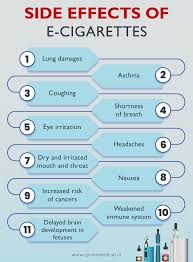In defense of transgender athletes

May 18, 2022
With the recent news of transgender athlete Lia Thomas winning the NCAA Division I national championship in the women’s 500 freestyle event, discussions and debates have erupted over the fairness of transgender athletes (specifically transgender women) in sports. The question of whether a transgender woman has an unfair physical advantage over cisgender athletes has become the primary talking point for this debate. While I do agree that the initial hormone imbalances between the average biological male and woman give a considerable competitive advantage to men (1), research has shown that those who have undergone hormonal therapy have little to no athletic primacy after just a year of treatment. This means that athletes within or past this stage of conversion should fully be within their rights to compete with their preferred gender.
First, let’s explore the research behind hormonal effects on athleticism and the treatments designed to level the playing field for trans athletes. Testosterone is the primary hormone of discussion, as an excessive amount within trans-female athletes allows for athletic advantages. An explanation of how this hormone affects athletic performance is best described by Endocrine Reviews, a peer-reviewed academic journal.
“The… increase in circulating testosterone (in males at the age of puberty) provides a major, ongoing, cumulative, and durable physical advantage in sporting contests by creating larger and stronger bones, greater muscle mass and strength, and higher circulating hemoglobin as well as possible psychological (behavioral) differences.” (3)
These effects make it clear that a potential athletic primacy is present when an athlete has excess amounts of testosterone compared to their fellow athletes. This poses the question of how it’s possible for this advantage to be almost entirely eliminated with hormone replacement therapy. Most importantly, it should be known that a large percentage of those who undergo hormone treatment are also administered testosterone blockers, which are directly used to lower testosterone levels in their body.
A study by Gooren and Bunck (4) explored the effects of conversion therapy in both transgender male and female individuals in comparison with each other and cisgender individuals over the span of 1 year. The study concluded that, after a year of hormonal therapy for transgender males, testosterone levels grew to the same levels as cisgender males. (4) Their muscle mass content in the same time span was within the same range as transgender females (assigned male at birth) who had not been administered hormonal therapy. For transgender females, testosterone levels after one year of treatment had been reduced to levels reflecting a female-born athlete, while muscle mass, although significantly reduced, still remained relatively higher than biologically female individuals. While this does leave uncertainty on the fairness of transgender female athletes, it should be noted that this study does not explore the effects of testosterone blockers nor the direct effect of hormone replacement therapy on athleticism (I.e. running time). In addition to this, the sample size of this study was relatively small, with a group of 36 individuals. (1, 4)
An important fact to think about is that hormones aren’t the only effects on athleticism. For example, genetics is a huge factor in athletic performance, as it influences strength, endurance, height, muscle structure, wingspan, etc. A common argument against trans female athletes is that their competition is “unfair”. The problem with this is that, due to genetics, sports are already unfair. Someone with extremely athletic genes that allows them to retain larger muscle mass, have a larger frame, greater strength, etc. compared to the average person could be considered wildly unfair by that same logic. A great example of this is the basketball Hall of Famer Wilt Chamberlain. Chamberlain was 7’1”, 275 lbs, and could bench press upwards to 500lbs. In comparison, Shaquille O’Neal has only been able to bench press around 450 lbs. For the average player during Wilt’s time, the standard height for a center was around 6’10” making wilt a full 3 inches over nearly every opposition. The average weight during this time was around 220-230. The truth of the matter is that Wilt Chamberlain, among many other “freak” athletes, were far above their competition. There will always be these amazing athletes that are far above any competition because of factors like their genetics, environment, and so much more.
These factors apply to trans athletes as well, and Lia Thomas isn’t so different. Even before her transition, she was still an amazing swimmer, being ranked in the nation and placing in the top 100 and lower in several events. After transitioning, the outrage began after she placed first in the 500 freestyle, but this anger is in no way justified. For starters, Thomas wasn’t expected to even win in the event, and the second place holder only finished 1.75 seconds after her, which is a very small margin considering that it’s a distance event. She didn’t “destroy” her competition, and in fact, she didn’t even outswim a majority of the past winners of this event. According to USA swimming, she finished with the 15th fastest 500 in the meet’s history, with the majority of those placing above her being within the past few years. Furthermore, she lost plenty of other events in that very same meet.
Another common argument against her is that the discrepancy between her rankings in the men’s division and her rankings now show a clear athletic advantage, with rankings in the men’s division 500 being 65th, in the 1650 yd being 32nd, and in the 200 yd being 554th. In the women’s division, she placed 1st in the 500, 8th in the 1650, and 5th in the 200. It needs to be known that these are comparing her placings from when she was a sophomore to when she was a senior, meaning she has had two years of dedicated practice and training in the absence of the 2020-21 season. It’s hard to accurately measure just how much training and experience she gained in those two years, and the difference between the two-time points is hard to track progress and other factors that led to her placing.
I believe that it’s important to realize that the physical capabilities of trans athletes aren’t the only important factor, especially within high school athletics. The inclusion of these athletes should be considered necessary, as forbidding trans students from a debatably vital part of American school culture can be detrimental to mental health. These aren’t athletes transitioning with the sole intention of winning medals in an “easier” field of competition. They are just kids trying to express themselves in the way they feel most comfortable.
Republican Governor of Utah, Spencer Cox, made a powerful statement in regards to vetoing an anti-trans bill. “Four kids who are just trying to find some friends and feel like they are a part of something. Four kids trying to get through each day. – Rarely has so much fear and anger been directed at so few. I don’t understand what they are going through or why they feel the way they do. But I want them to live.” Cox said after discussing trans youth suicide rates.
Sources:













